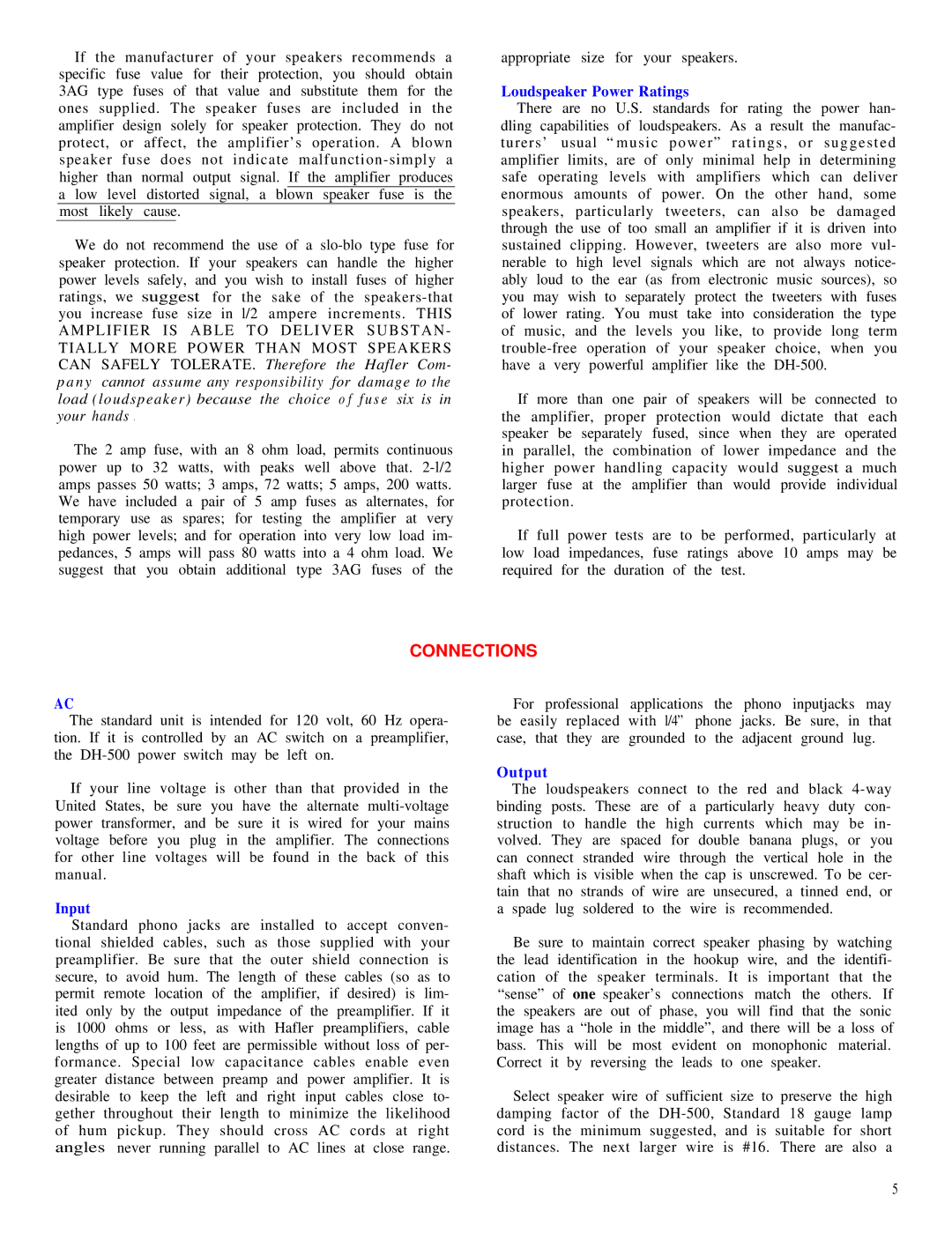
If the manufacturer of your speakers recommends a specific fuse value for their protection, you should obtain 3AG type fuses of that value and substitute them for the ones supplied. The speaker fuses are included in the amplifier design solely for speaker protection. They do not protect, or affect, the amplifier’s operation. A blown speaker fuse does not indicate
most likely cause.
We do not recommend the use of a
The 2 amp fuse, with an 8 ohm load, permits continuous power up to 32 watts, with peaks well above that.
appropriate size for your speakers.
Loudspeaker Power Ratings
There are no U.S. standards for rating the power han- dling capabilities of loudspeakers. As a result the manufac- turers’ usual “music power” r a t i n g s , o r s u g g e s t e d amplifier limits, are of only minimal help in determining safe operating levels with amplifiers which can deliver enormous amounts of power. On the other hand, some speakers, particularly tweeters, can also be damaged through the use of too small an amplifier if it is driven into sustained clipping. However, tweeters are also more vul- nerable to high level signals which are not always notice- ably loud to the ear (as from electronic music sources), so you may wish to separately protect the tweeters with fuses of lower rating. You must take into consideration the type of music, and the levels you like, to provide long term
If more than one pair of speakers will be connected to the amplifier, proper protection would dictate that each speaker be separately fused, since when they are operated in parallel, the combination of lower impedance and the higher power handling capacity would suggest a much larger fuse at the amplifier than would provide individual protection.
If full power tests are to be performed, particularly at low load impedances, fuse ratings above 10 amps may be required for the duration of the test.
CONNECTIONS
AC
The standard unit is intended for 120 volt, 60 Hz opera- tion. If it is controlled by an AC switch on a preamplifier, the
If your line voltage is other than that provided in the United States, be sure you have the alternate
Input
Standard phono jacks are installed to accept conven- tional shielded cables, such as those supplied with your preamplifier. Be sure that the outer shield connection is secure, to avoid hum. The length of these cables (so as to permit remote location of the amplifier, if desired) is lim- ited only by the output impedance of the preamplifier. If it is 1000 ohms or less, as with Hafler preamplifiers, cable lengths of up to 100 feet are permissible without loss of per- formance. Special low capacitance cables enable even greater distance between preamp and power amplifier. It is desirable to keep the left and right input cables close to- gether throughout their length to minimize the likelihood of hum pickup. They should cross AC cords at right angles- never running parallel to AC lines at close range.
For professional applications the phono inputjacks may be easily replaced with l/4” phone jacks. Be sure, in that case, that they are grounded to the adjacent ground lug.
Output
The loudspeakers connect to the red and black
Be sure to maintain correct speaker phasing by watching the lead identification in the hookup wire, and the identifi- cation of the speaker terminals. It is important that the “sense” of one speaker’s connections match the others. If the speakers are out of phase, you will find that the sonic image has a “hole in the middle”, and there will be a loss of bass. This will be most evident on monophonic material. Correct it by reversing the leads to one speaker.
Select speaker wire of sufficient size to preserve the high damping factor of the
5
